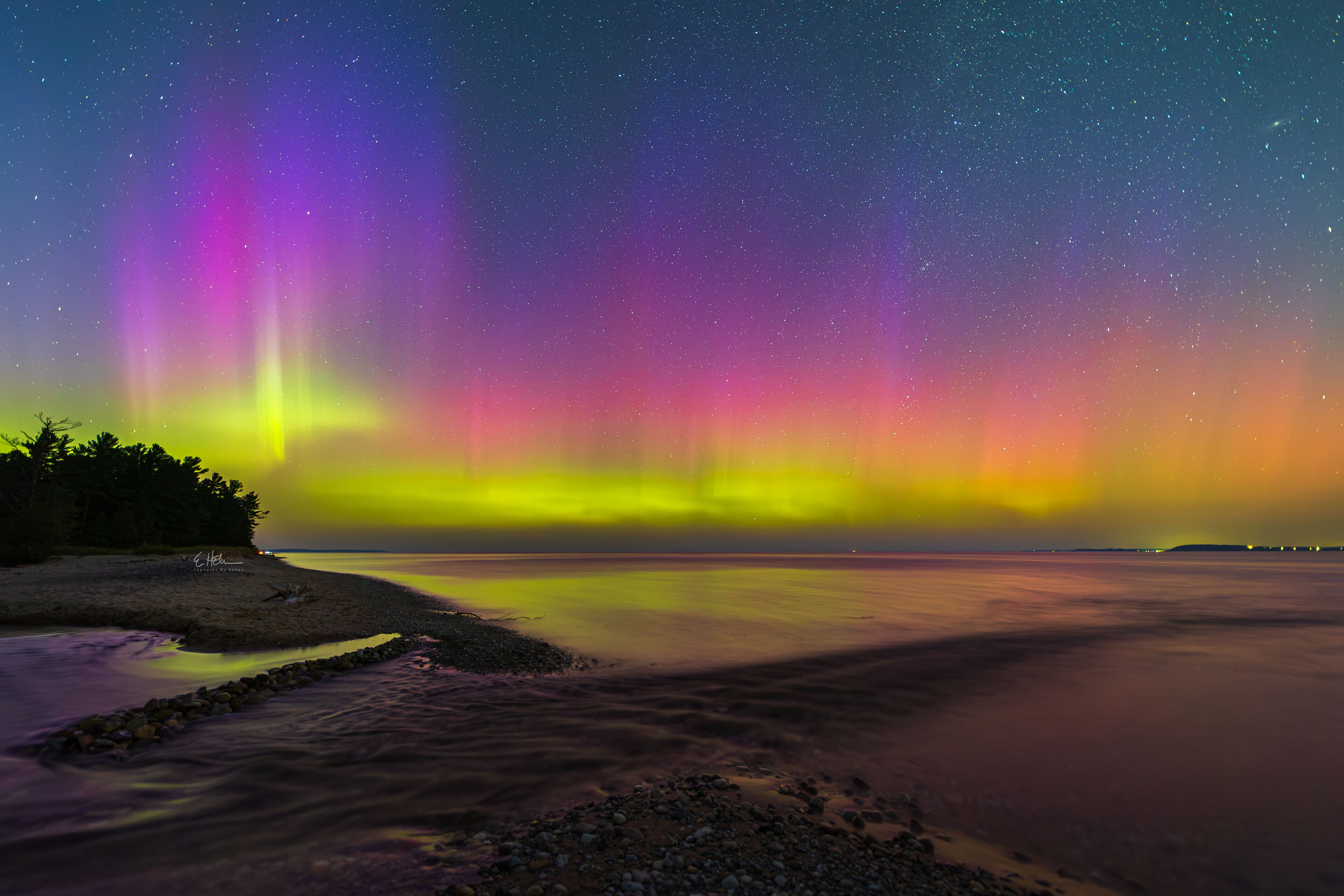Spaceweather.com Time Machine - September 3, 2023

AS PREDICTED, A GEOMAGNETIC STORM: We predicted a G2-class geomagnetic storm this weekend, and it happened. The question is, why? At least one CME was supposed to hit Earth's magnetic field on Sept. 2nd. Yet solar wind data show no clear signs of a CME impact. Whatever the reason for the storm, it sparked mid-latitude auroras in the USA.
"Last night was absolutely epic!!" says Ethan Hohnke, who sent this picture from Sleeping Bear Dunes National Lakeshore near Empire, Michigan.
"Northern lights could be seen dancing over the waters of Lake Michigan before the bright Moon rose," says Hohnke. "I was standing near the 45th parallel when I took this picture."
The lights spread even farther south than that. Photographers captured the red glow of atomic-oxygen auroras in Colorado (+38.9N) and Missouri (+38.6N). In these southernmost photographs, auroras were not visible to the naked eye, but easily recorded by cameras and cell phones with nighttime exposure settings.
Back to the origin of the storm: It is possible that a CME arrived on Sept. 2nd, but its weak impact was masked by a chaotic stream of solar wind already blowing around Earth at the time. At this time of year, even weak CMEs do a good job sparking auroras--a result of the Russell-McPherron effect which boosts geomagnetic activity around the equinoxes. Aurora alerts: SMS Text
